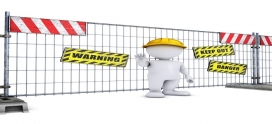Factors for Determining the Appetite and Digestion Level of Risk
Among the universal options for investment, there is none that does not test the investor on either of the two factors- appetite for risk and gains expected. Like almost every decision one faces in life, investments are a dilemma. Usually, only what is high risk could bear fruit of high gain and vice versa. However, risk is something that must be calculated holistically before the investor takes the plunge because in an untoward case, even the losses may turn out to be exceptionally huge. Lower risk, mostly, indicates more stability in the investment option. The appetite for risk and its tolerance are two very different things. Though used interchangeably, these terms define different aspects of the investment.
The appetite for risk in an investment pertains to the readiness with which you might want to take that risk. However, with focused calculation before any investment move, you may become aware of your ‘tolerance’ for the risk that you are thinking about taking. It is much like understanding the shock absorber phenomenon for a vehicle. Though a car has shock absorbers to perform on the road that are not smooth or bump-free, however, there is only as much shock as a particular make of car can take; and beyond that pressure, there may be severe damage to the vehicle. So, while the appetite of risk may depend on the personality of the investor, the tolerance level is something that has to be calculated.
The following factors are helpful in determining the appetite for risk in the investment:
Depending upon Age
At the beginning and at a younger age, investors are willing to take relatively higher risks to reap greater rewards expected out of an investment. This is done at a stage where liabilities like loans, etc. and responsibilities are at a minimum. Early twenties may be a good time to invest in such a way. However, as one progresses into their 30s, family and responsibilities take higher priority, so the best idea is to form a balanced and diverse portfolio of investments that, while fetching you high returns, must also cover the risks your investment is susceptible to.
In the later years, it is advised that the degree of risk be reduced to a minimal for ease and convenience during the last years of working and the post retirement stage as well.
Experience and Knowledge
Understanding the money market and investments in general is a big plus point for an investor. It helps if the investor is aware of the upcoming schemes and investments. It is also advisable to stay abreast with the way various sectors are performing so that you know when to act bearish and when to withdraw the money in a bullish scenario.
The tolerance for risk is subjective and may depend on the following factors:
- Digestion – According to Income
This is the greatest factor that determines an investor’s tolerance for risk in the investment. The income is calculated by combining the returns in the form of salaries and in any other form such as rent on the property, etc. Needless to say, higher the income, the higher is the level of risk tolerance. This is so because the income is always there to cover the sudden losses, if any.
- Expenses
For investors who have great expenses, the net available income reduces, remarkably. This is because even with high incomes, the expenses extract a major part of the income and leave very little behind. In consequence, the tolerance for risk is reduced and the investor must not enter very risk investment. Keeping financial health intact is the primary objective.
- Financial Objectives
If the investor keeps in mind certain short term goals for which not much financial planning has been done, investing a large amount from the income or savings may not be possible. However, if the very same goals were planned and had not erupted suddenly in the course of events, then the tolerance for risk would have been much higher than in the unplanned situation.
If the goals are long term, even then the tolerance limit for risk may increase to some extent for the simple reason that no liquidity is required immediately.
- Liquid Cash
If the investor has carefully put aside some contingency funds in the bank or has liquidity in hand, he/she would be better equipped to tolerate the risks that the investments bring with them. It’s so since a contingency fund or cash at hand serves as a good cover in case an investment results in losses.
- Insurance
Insurances come in a variety of forms today. And solely, or in a combination, if there is sufficient insurance to cover an individual and his risks in the investment, the investor becomes more tolerant towards risk.
For example, if your car is insured for accidents, it may leave you with excess funds to channelise in investment than when the car does not have insurance. Similarly, personal health insurance is also highly recommended. With medical procedures becoming complicated and expensive, it takes off a significant financial burden off the shoulders to be well insured.
So, before investing, it helps to judge whether your appetite for risk and tolerance are at compatible levels.



